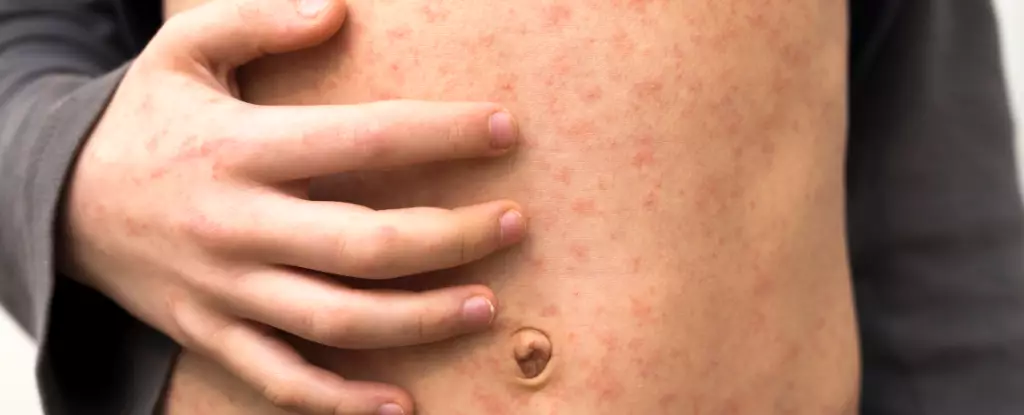In late January 2025, the serene landscape of public health was shattered by a measles outbreak in west Texas. As of March 28, the confirmed case count soared to 400 in Texas, with an additional 50 reported in neighboring New Mexico and Oklahoma. Alarmingly, health experts assert that the actual numbers are likely far higher. Measles, a disease rarely experienced by the under-50 demographic in America due to previously successful vaccination campaigns, is staging a disturbing comeback, raising the specter of a significant resurgence that could have dire consequences for public health.
The rapid spread of the virus spurred concerns over potential contact points—planes, trains, and public health facilities—indicating that this outbreak is not just confined to isolated locales. Notably, locations such as Washington Dulles International Airport and an Amtrak route connecting New York City to Washington, D.C., pose a high risk for unvaccinated individuals. The interconnected nature of modern travel means that an outbreak like this one has the potential to escalate rapidly, leaving a trail of infection across state lines and even international borders.
The Serious Nature of Measles Infection
The seriousness of measles cannot be overstated. Current statistics indicate that approximately 14% of measles cases in 2025 have resulted in hospitalization, a figure that, while lower than the 40% seen in the previous year, still presents a grave risk. Measles is not merely an innocuous childhood illness characterized by a rash and fever; it can wreak havoc on multiple body systems, potentially leading to severe complications.
The virus is incredibly contagious, with one infected person capable of transmitting the disease to 90% of nearby unvaccinated individuals—a figure that underscores the critical need for comprehensive immunization campaigns. The immunity provided by a two-dose regimen of the measles vaccine is 97% effective, emphasizing just how essential vaccination is in containing outbreaks and protecting community health.
The Biological Mechanics of Measles
Understanding the biological mechanics of the measles virus provides important insights into why it is so dangerous. After infection, the virus binds to designated proteins on cell surfaces, delivering its genetic material and thereby commandeering the host’s cells for replication. This initial attack primarily targets the upper respiratory tract and lungs, where it can severely impair respiratory function.
The consequences of measles can lead to complications such as pneumonia, which can escalate to life-threatening levels. Alarmingly, one in 20 children with measles may develop viral pneumonia—the leading cause of measles-related deaths. Moreover, the virus isn’t solely a respiratory menace; it can infiltrate the nervous system, causing inflammation and potential long-lasting damage.
Complications: The Unseen Monsters of Measles
Complications extend beyond immediate respiratory issues. Measles can wreak havoc on the immune system, with emerging evidence suggesting that surviving the disease may reduce an individual’s ability to recognize pathogens they’ve previously encountered. This effect can render individuals more susceptible to other infections, creating a cascading failure in overall immunity.
Furthermore, rare—but alarming—complications like subacute sclerosing panencephalitis (SSPE) raise profound concerns. This progressive brain condition can emerge years after the initial measles infection, though its exact mechanisms remain poorly understood. The incidence is particularly high among those infected before the age of 1, underscoring the urgent need for vaccination during early childhood.
Innovative Routes Towards Prevention
As researchers continue to explore potential treatments and therapeutic strategies for measles, the best weapon remains prevention: vaccination. While advancements in antibody therapies could offer new avenues for care, they pale in comparison to the prospect of avoiding measles altogether through effective and widespread vaccination campaigns. Education around the risks associated with measles and the realities of vaccine efficacy must be emphasized to counteract the growing transformation of perception regarding immunity and disease.
As misinformation and hesitancy surrounding vaccines pose serious risks, it is vital for public health officials, medical professionals, and the community at large to advocate for vaccination—not simply as a means of preventing a rash, but as an essential bulwark against a potential public health catastrophe. The current measles outbreak serves as a stark reminder that complacency can lead to devastating consequences, emphasizing the critical importance of maintaining robust vaccination programs and public health initiatives.

